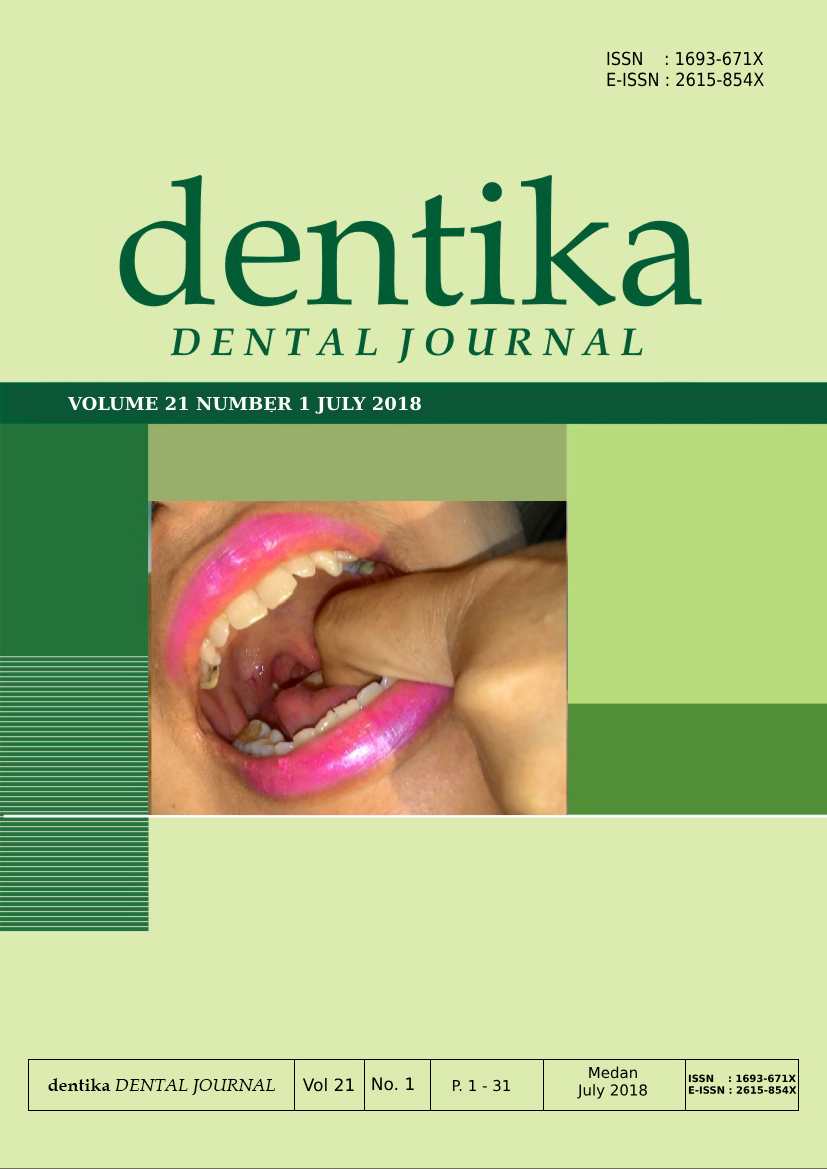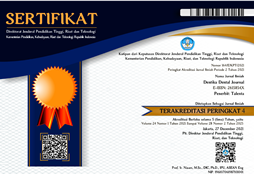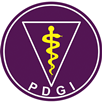DISCOLORATION OF TOOTH ENAMEL DUE TO BETEL LEAF EXTRACT (Piper betle Linn)
DISKOLORISASI EMAIL GIGI AKIBAT EKSTRAK DAUN SIRIH (Piper betle Linn)
DOI:
https://doi.org/10.32734/dentika.v21i01.196Keywords:
Betel Leaf, Mouth Wash, Enamel DiscolorationAbstract
The tooth enamel colour play an important role in esthetics. The discoloured teeth could be due to the using of boild Piper betle extract as a mouth wash. Up to now many people in Indonesia using the boiling Piper betle extract to manage oral diseases and to prevent tooth decay. The aim of this in vitro study are to know the effective concentration and application time of this agent to change the enamel colour. Fresh Piper betle leaves were processed to get 4 differents concentration (50, 33, 25, and 5%). Aquabidest was used as negative control. Every concentration was studyed using 2 maxillae premolar teeth in 24, 48, and 72 hours application times. 30 good condition teeth were used in this research.
The results showed that every concentration gaves discoloured changes. The optimal concentration and duration are 25% and 48 hours. It is concluded that using of this gargling agent must be intermittent. It can be suggested to use this agent only once or twice daily, each for 2 until 3 minutes gargling.


















